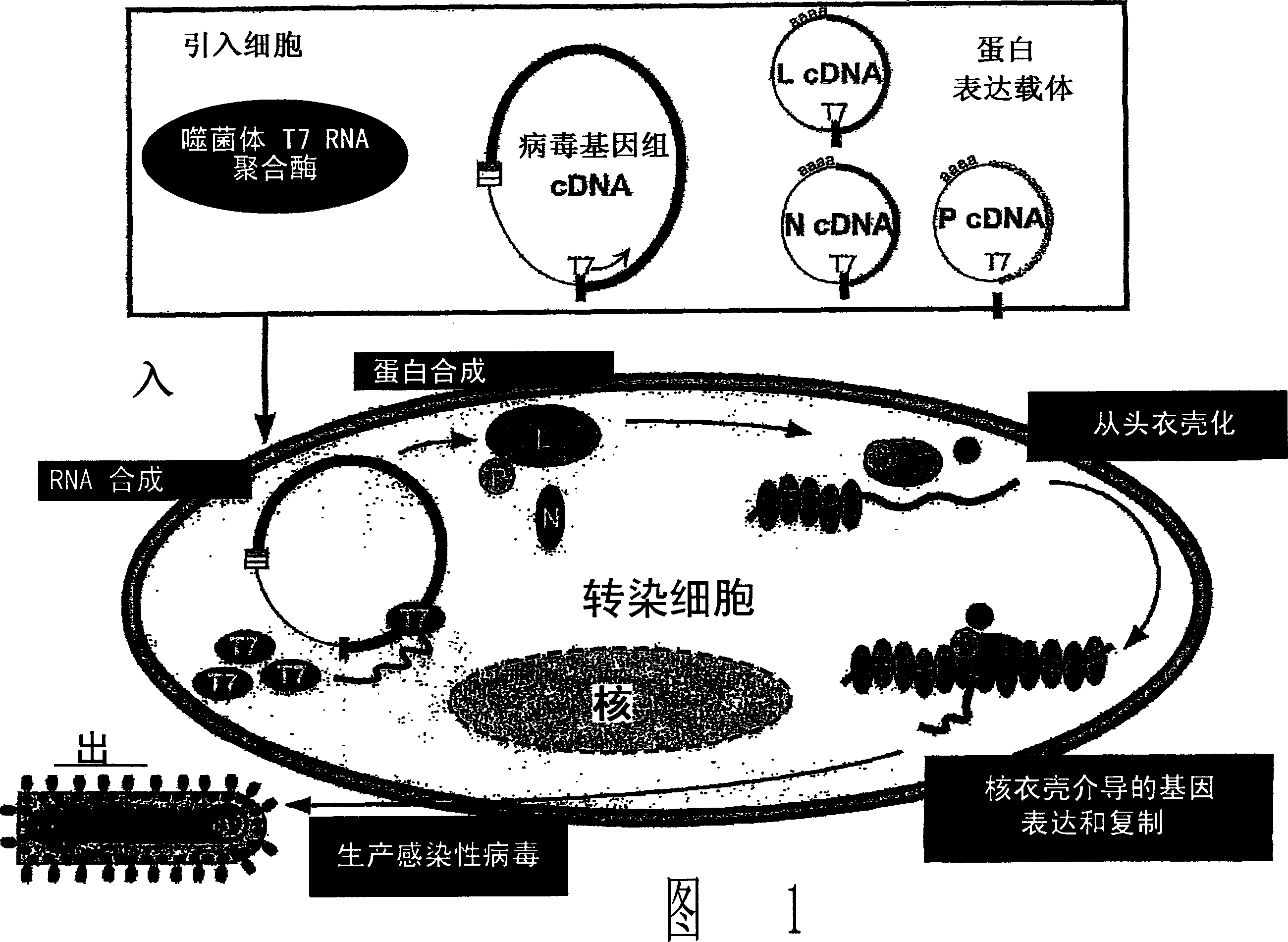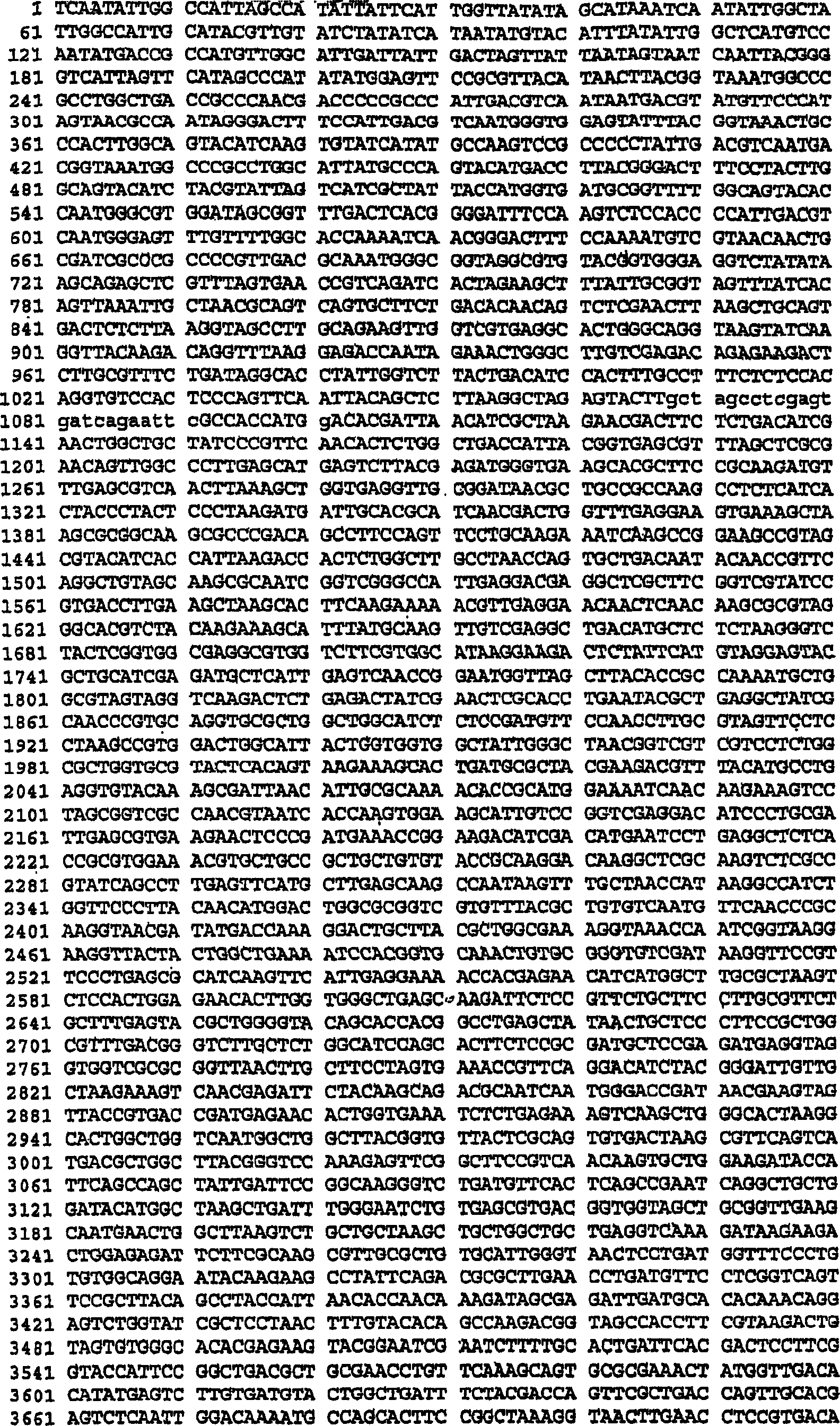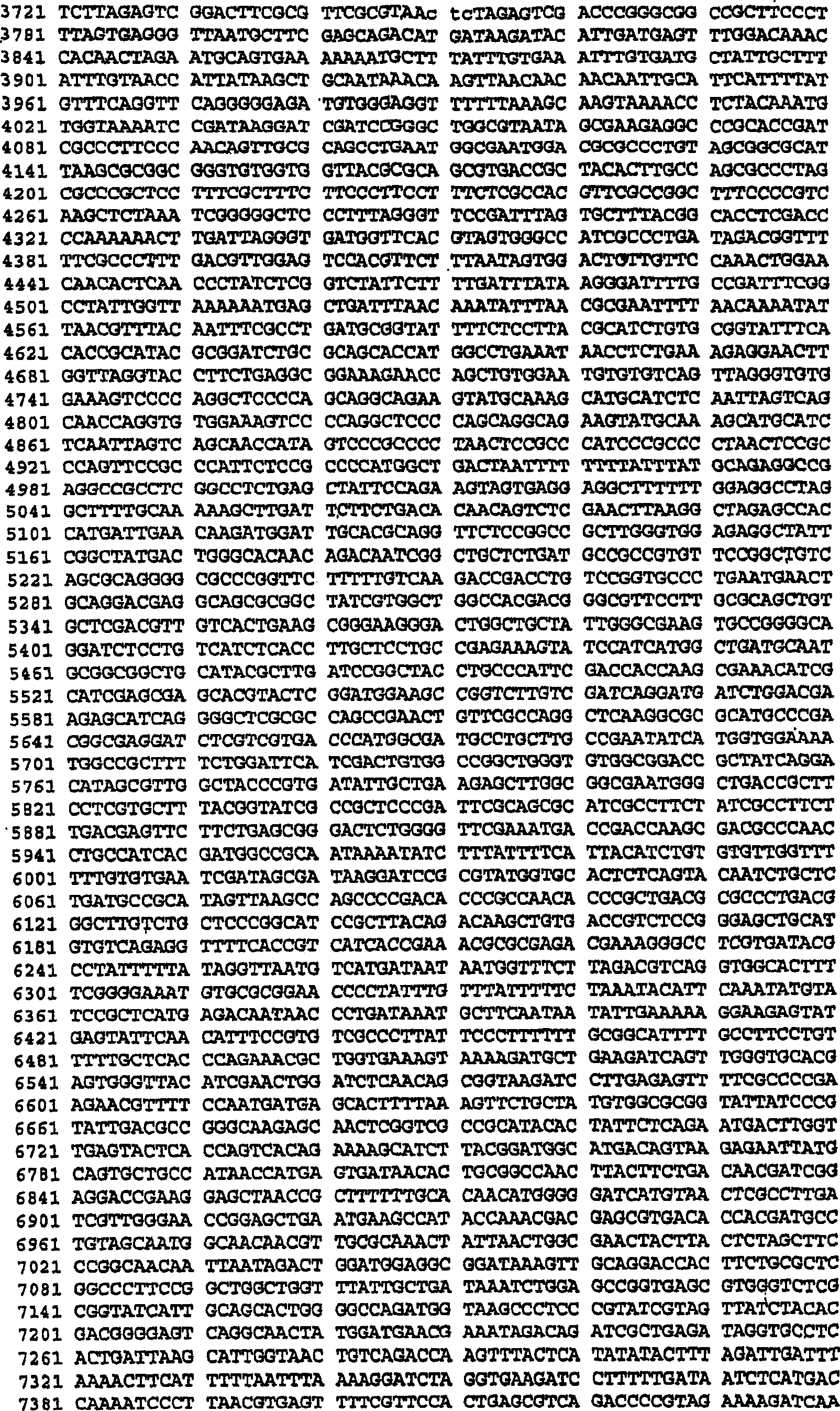Method for the recovery of non-segmented, nagative-stranded rna viruses from cdna
An RNA virus, segmented technology, applied in the field of improvement of the recovery of non-segmented negative-strand RNA viruses from cDNA, which can solve problems such as limiting the number of T7 cell lines
- Summary
- Abstract
- Description
- Claims
- Application Information
AI Technical Summary
Problems solved by technology
Method used
Image
Examples
Embodiment I
[0229] A Universal Calcium Phosphate Transfection Method for the Rescue of Nonsegmented Negative-Strand RNA Viruses from Vero Cells
[0230] the solution
[0231] The following solutions are typically used for host cell transfection: 280 mM NaCl [16.4 g NaCl (or 56 mL 5M NaCl)], 50 mM BES [10.7 g BES (without acid form)] and 1.5 mM sodium phosphate [0.21 g NaCl 2 HPO 4 ] in 2×BBS (per L) solution (2×BES-buffered saline). The pH of the BBS solution was adjusted to 6.95-6.98 with NaOH. The solution was then filter sterilized and stored frozen.
[0232] Prepare 2.5M CaCl with 36.8 g calcium chloride per 100 ml total volume 2 solution, stored at -20°C. The solution was sterilized by filtration with nitrocellulose (membrane). Avoid cellulose acetate filters as they will clog. Alternatively, autoclave the transfection solution. However, the latter step is less necessary since the 2x BBS solution may be slightly altered during autoclaving.
[0233] The following solutions ar...
Embodiment II
[0245] A Universal Calcium Phosphate Transfection Method to Rescue Paramyxoviruses
[0246] The calcium phosphate transfection procedure used in the following alternative transfection method is based on the method of Chen and Okayama, Mol. Cell. Biol. 7:2745-2752, 1987, which is incorporated herein by reference.
[0247] Exemplary DNA:
[0248] 1. The full-length viral genome cDNA clone contains the T7 promoter fused to the 5' end of the sense strand and the ribozyme fused to the 3' end.
[0249] 2. Protein expression plasmid, controlled by T7 RNA polymerase promoter, encoding nucleocapsid protein (N or NP), phosphoprotein (P) and polymerase protein (L).
[0250] 3. A plasmid encoding the T7 RNA polymerase protein under the control of the immediate early transcriptional control region of human cytomegalovirus.
[0251] Exemplary calcium phosphate transfection reagents:
[0252]1. 2X BES-buffered saline: 50nM BES (pH 6.95-6.98), 280mM NaCl, 1.5mM Na 2 HPO ...
Embodiment III
[0275] Rescue of measles virus (MV) in Vero cells
[0276] Measles virus was rescued in Vero cells using the exemplary transfection method described in Example I above. The source of T7 was the plasmid pSC6-T7 (no MVA) or MVA / T7 (Wyatt et al., 1995). The results indicated successful rescue of many MV(+), as shown in Table 3 below (columns A-F represent different rescue experiments performed on different days, each experiment represented by multiple transfections - up to 12 individual transfections in experiments E and F Dye (hole)).
[0277] table 3
[0278] Rescue of measles virus with plasmid-T7 or MVA / T7
[0279]
PUM
 Login to View More
Login to View More Abstract
Description
Claims
Application Information
 Login to View More
Login to View More - R&D
- Intellectual Property
- Life Sciences
- Materials
- Tech Scout
- Unparalleled Data Quality
- Higher Quality Content
- 60% Fewer Hallucinations
Browse by: Latest US Patents, China's latest patents, Technical Efficacy Thesaurus, Application Domain, Technology Topic, Popular Technical Reports.
© 2025 PatSnap. All rights reserved.Legal|Privacy policy|Modern Slavery Act Transparency Statement|Sitemap|About US| Contact US: help@patsnap.com



